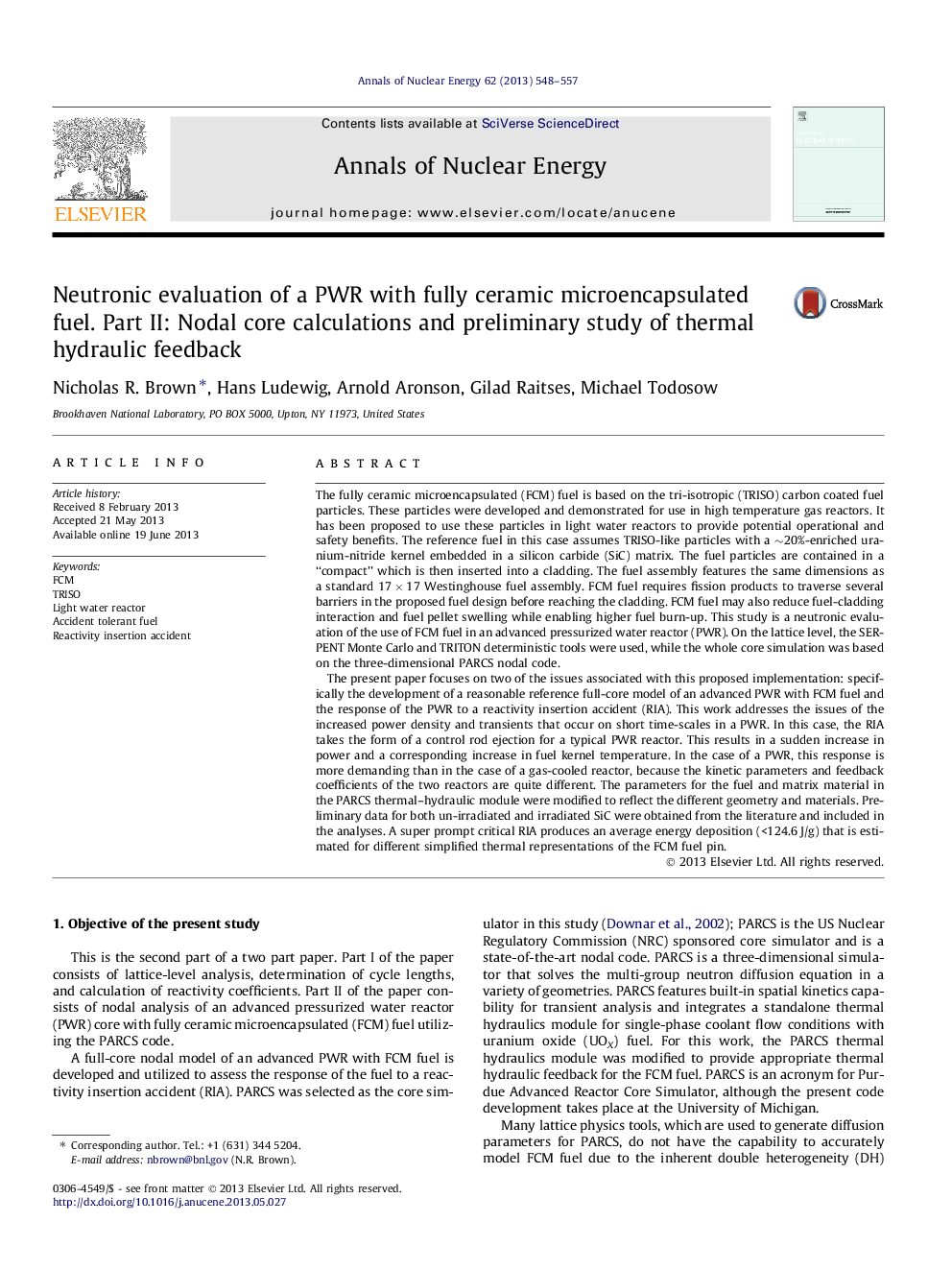| Article ID | Journal | Published Year | Pages | File Type |
|---|---|---|---|---|
| 8070040 | Annals of Nuclear Energy | 2013 | 10 Pages |
Abstract
The present paper focuses on two of the issues associated with this proposed implementation: specifically the development of a reasonable reference full-core model of an advanced PWR with FCM fuel and the response of the PWR to a reactivity insertion accident (RIA). This work addresses the issues of the increased power density and transients that occur on short time-scales in a PWR. In this case, the RIA takes the form of a control rod ejection for a typical PWR reactor. This results in a sudden increase in power and a corresponding increase in fuel kernel temperature. In the case of a PWR, this response is more demanding than in the case of a gas-cooled reactor, because the kinetic parameters and feedback coefficients of the two reactors are quite different. The parameters for the fuel and matrix material in the PARCS thermal-hydraulic module were modified to reflect the different geometry and materials. Preliminary data for both un-irradiated and irradiated SiC were obtained from the literature and included in the analyses. A super prompt critical RIA produces an average energy deposition (<124.6Â J/g) that is estimated for different simplified thermal representations of the FCM fuel pin.
Related Topics
Physical Sciences and Engineering
Energy
Energy Engineering and Power Technology
Authors
Nicholas R. Brown, Hans Ludewig, Arnold Aronson, Gilad Raitses, Michael Todosow,
